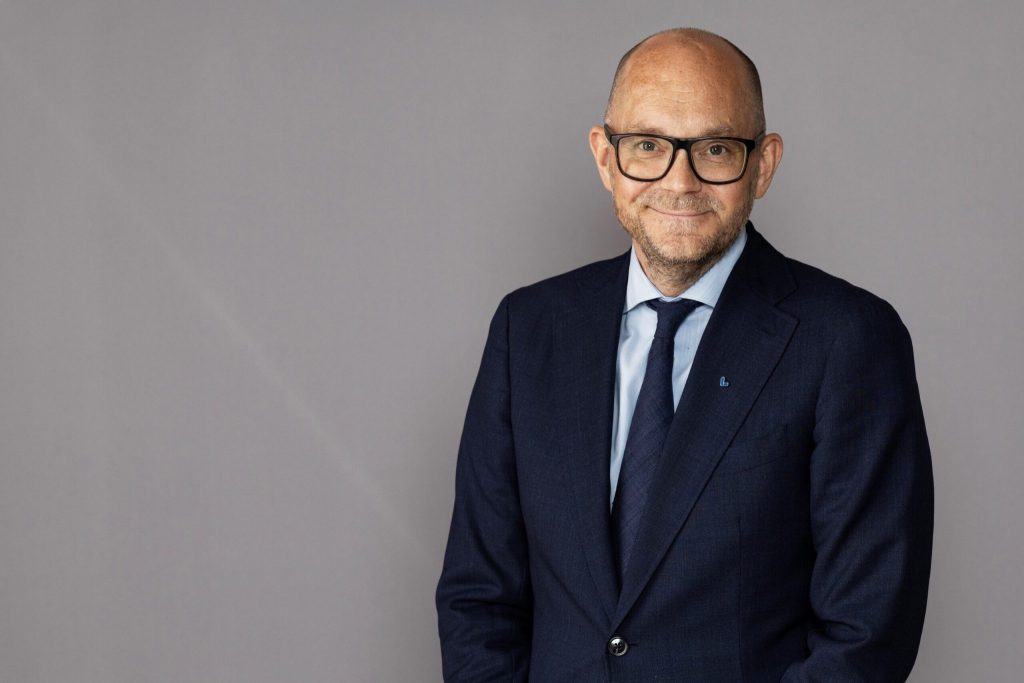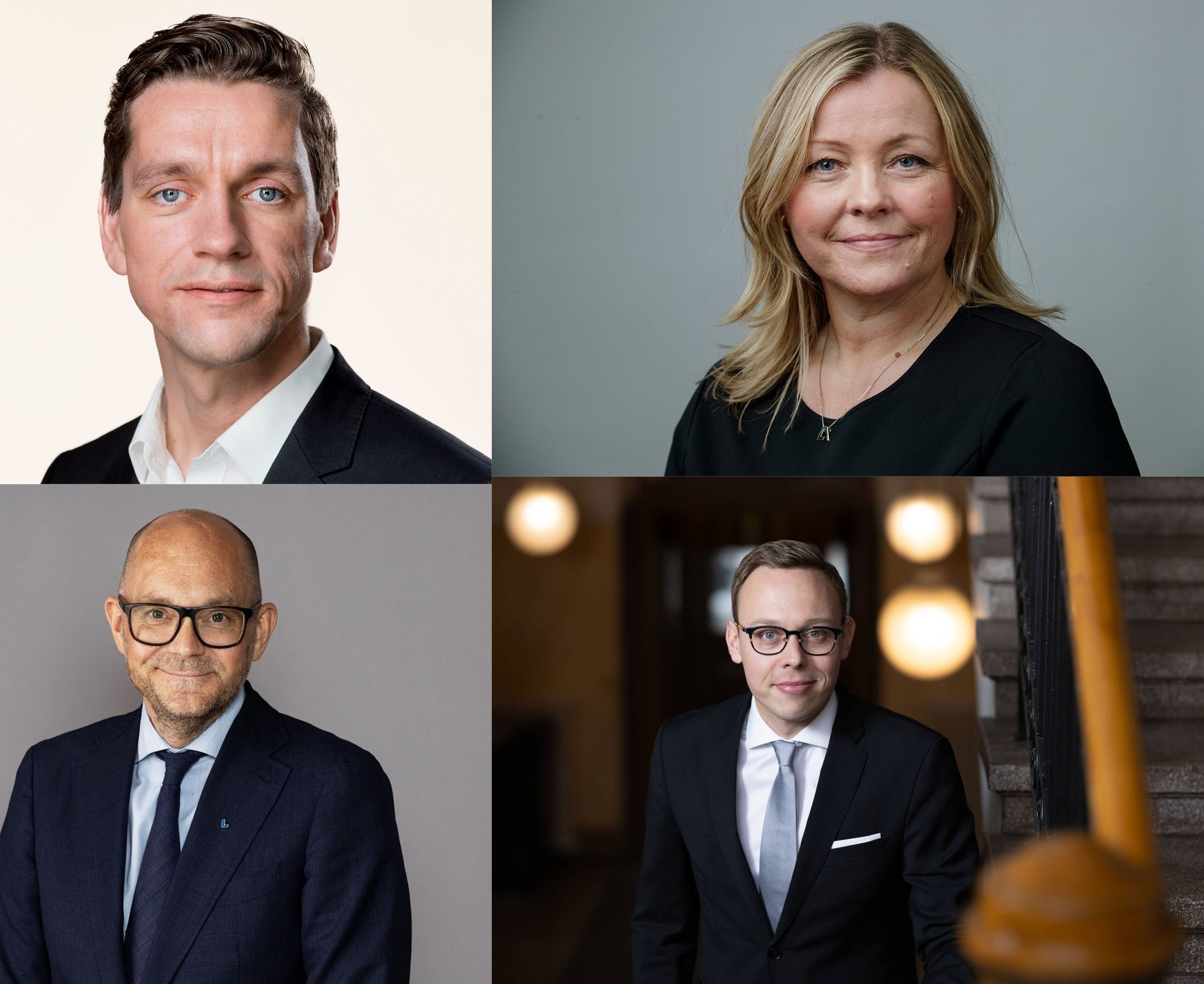The new government ministers inherited major reform processes – work which they will carry into the new year.
We will, nevertheless, venture to take a look back as the year nears its end to highlight some important events and developments in each country.
Read this article in Norwegian on Arbeidsliv i Norden
DENMARK: Initiating a historic reform
At the end of September, Denmark’s Prime Minister Mette Frederiksen (Social Democrats) performed a government reshuffle. It included Kaare Dybvad Bek taking the post of Minister for Employment after Ane Halsboe-Jørgensen, who was moved to the post as Minister for Taxation.
Dybvad Bek was elected a member of parliament for the first time in 2015. Just four year later, he became a government minister.
He served as Minister for Housing between 2019 and 2021, when the position was changed to also include domestic affairs, and Dybvad Bek became Minister for the Interior and Housing. Just one year later, in 2022, he was appointed Minister for Immigration and Integration.

Kaare Dybvad Bek is 41. He trained as a geographer but calls himself a non-fiction writer.
He had already published the books Udkantsmyten (The Periphery Myth) and De lærdes tyranni (The Tyranny of the Learned), when, in 2023, he published book number three: Arbejdets land (The Country of Work).
In that book, Dybvad Bek argues that it is work ethics and not natural resources that have made Denmark one of the world’s best countries to live in.
He delves into history, from the birth of the welfare state to today’s challenges, where some choose to work part-time or to leave traditional working life early.
Political commentators have pointed out that Kaare Dybvad Bek’s move into what in Danish is called the Ministry of Employment is a sign that immigration policy has become central to labour-market policy.
As Minister for Employment, Kaare Dybvad Bek will be responsible for executing Beskæftigelsesreformen (the Employment Reform) and Kontanthjælpsreformen (the Benefits Reform).
Beskæftigelsesreformen is described as “the biggest simplification of the employment system in Denmark’s history”. The reform was adopted by the Danish parliament in April and contains 31 initiatives.
The aim is to create a more dignified, flexible and less bureaucratic approach to unemployed people. Job centres are being closed down, and municipalities will be given more freedom to organise employment support.
The reform will be implemented in phases in 2026 and 2027.
Kontanthjælpsreformen, which came into force on 1 July 2025, is a major change to the Danish benefit system. The aim is to simplify the rules and strengthen the incentive to work.
Put simply, there is a shift from a system with many different benefit schemes to one with just three rates: minimum, basic and higher.
There has been no shortage of criticism of the reform. Several senior municipal officers have sounded the alarm, arguing the agreement could result in more people becoming homeless.
FINLAND: Aiming to create more jobs in a flexible labour market
In the spring, Matias Marttinen became the head of the Finnish Ministry of Employment and the Economy. He took over as Minister of Employment from Arto Satonen. Both represent the National Coalition Party.
Born in 1990, Marttinen is the youngest of the Nordic labour ministers. He nevertheless has long political experience.
He was elected an MP in 2019.
Like several of his Nordic counterparts, one of Marttinen’s key tasks is to get more people into work.
The Finnish government has set itself the goal of creating 100,000 new jobs by 2027. Measures to tackle unemployment, especially long-term unemployment, are high on the agenda.
Now, in the final weeks of 2025, Marttinen is expecting to see a turning point in the Finnish labour market. The ministry recently published its prognoses for employment until the end of 2027.
The employment rate is expected to rise slowly but steadily in the next two years, from the expected 71.4 per cent in 2025 to 72.3 per cent in 2027.
The long-term aim, however, is an 80 per cent employment rate in 2031.
The Orpo government continues to pursue policies aimed at creating a more flexible labour market. This is not popular among the trade union movement. There is a strained relationship between the parties, but compared to 2024, 2025 has been a quiet year.
In 2024, there were several large-scale strikes in protest against the government’s planned labour market reforms, cuts to welfare benefits and restrictions on the right to strike.
ICELAND: Implementing reforms to the disability benefits system
In Iceland, Inga Sæland has been the employment minister for the whole of 2025. The leader of the People’s Party entered the government in 2024. She is the Minister of Social Affairs and Housing, with responsibility for labour market issues.
Sæland aims to eradicate poverty in Iceland. She herself has been a welfare recipient for much of her life.
Now, she has rolled out reforms to Iceland’s disability benefit systems.
The country has very high employment rates (82 per cent in 2024), but the reforms are intended to ensure that people with reduced work capacity can also contribute.
The partial disability grant gives people with 26 to 50 per cent ability to be active the chance to participate in the labour market. The maximum salary is 250,000 ISK (€1,690) a month. The scheme is permanent but can be reassessed if circumstances change.
The new disability pension was introduced at the same time as the partial disability grant. It is aimed at people who are assessed with 0 to 25 per cent ability to be active in the labour market. The scheme allows for higher payouts than before, and revised thresholds for employment income.
NORWAY: Looking for a new head of NAV
In September, Kjersti Stenseng from the Labour Party became Norway’s new Minister of Labour and Social Inclusion. She was not new to the government, however. She had been serving as the Minister of Local Government.
When Stenseng was handed the ministerial keys from Tonje Brenna, she made it clear that the most important tasks going forward were to get more young people into the labour market and reduce the number claiming benefits.
-
Norway’s new Minister of Labour
3 minutes
The minister is also tasked with implementing measures to strengthen skills and inclusion, and to adapt working life to technological developments, especially in the field of AI.
The Minister of Labour is responsible for following up on the government’s Ungdomsløft (“Youth Boost”). The government has set a target of 150,000 more people in work by 2030, with a particular boost for those under 30 through a new programme in 2025.
A separate programme, Jobbsjanse (Employment Chance), has also been launched to help more immigrant women into work.
But Stenseng has perhaps attracted the most attention, at least in the media, for sacking the head of NAV – the Norwegian Labour and Welfare Administration – in November.
This came after the Office of the Auditor General criticised NAV for providing incorrect information about internal control and for a lack of data logging in its IT systems, leading Stenseng to say that she no longer had confidence in NAV director Hans Christian Holte as its top leader.
Holte accepted full responsibility for the mistakes, but wished to remain as head of NAV. His dismissal sparked debate and criticism from leading figures in the business community.
SWEDEN: The Minister for Employment’s many pronouncements
Sweden got its new Minister for Employment on 28 June. Mats Persson left, and Johan Britz took over. Both represent the Liberal Party in the Swedish parliament. Britz has a degree in industrial engineering and management. He has been active in politics since he joined the Liberal Students organisation.
After graduating, he started working for the parent party, then he moved to the Ministry of Education, before spending several years at the Confederation of Swedish Enterprise. For the past five years, he has worked for or represented the party.

The minister for employment introduces himself with the following quotation on the ministry’s website:
“More children need to see their parents go to work. Skills shortages need to decrease, and more high-skilled jobs emerge. Therefore, education and training as well as work need to pay off”.
Britz has certainly not been short of statements and soundbites, particularly on labour immigration. Among other things, he has challenged the government’s cooperation agreement.
The so-called Tidö Agreement includes a plan to raise the salary requirement for labour immigrants to around the median wage in Sweden (about SEK 37,100 per month, or €3,400).
Johan Britz believes this is a failed policy and argues that labour immigration should be a “positive issue” for Sweden, something that strengthens the economy and the labour market.
He argues that a median wage requirement will make it very difficult for many businesses and public sector employers to recruit necessary labour from abroad.
Britz’s proposal that unemployed people should move house in order to pick berries was also not met with applause.
Neither was his suggestion made in an interview with Svenska Dagbladet that the main reason Sweden has such high unemployment figures is not because the government is making mistakes when it comes to the labour market, but:
“It is because we have too little growth and because we have a large number of people in this country who do not speak Swedish or have any formal education,” he said.
The remarks prompted reactions from several politicians. The Social Democrat Ardalan Shekarabi went so far as to call for the minister’s resignation. “He is unfit for office,” he told the same newspaper.
Britz remains in his ministerial post and now has to deal with the major reform of the unemployment insurance funds (A-kassa).
The new A-kassa reform (introduced on 1 October 2025) makes unemployment insurance income-based instead of being tied to the number of hours worked. The aim is twofold: to provide security for more people, and to get people back into work more quickly.
The reform has met resistance from the trade union movement, which argues that the phased reduction in support will hit vulnerable groups and undermine security.








